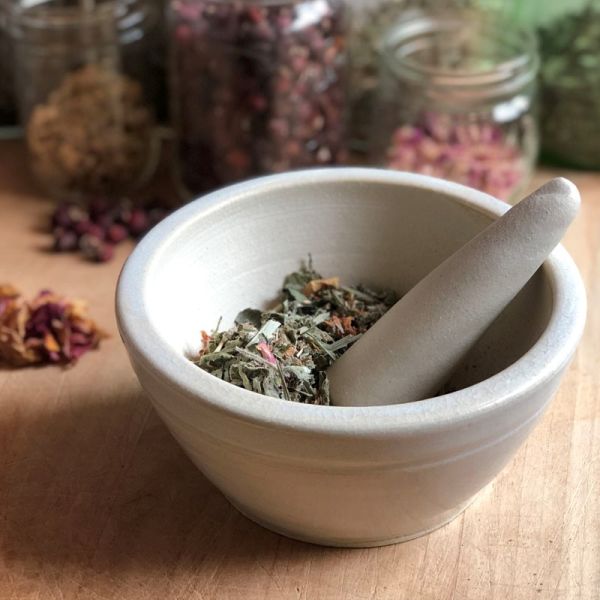

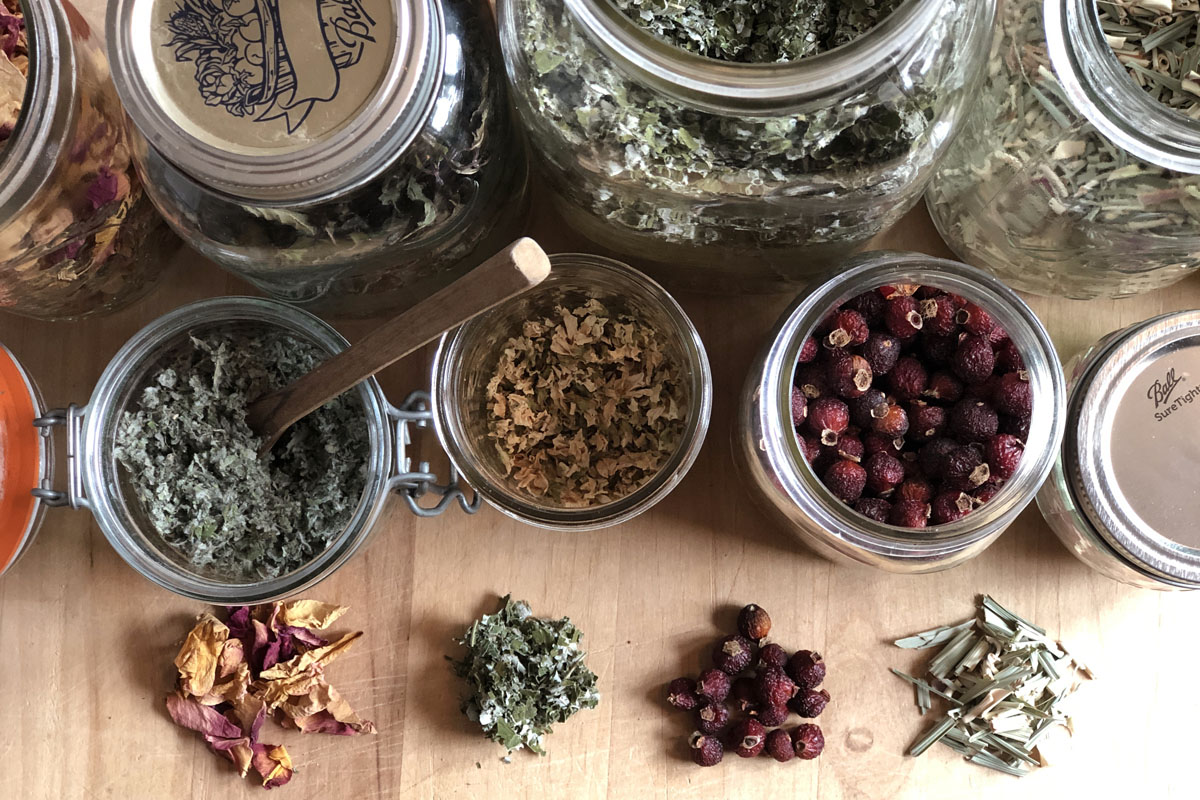 When cool weather sets in, all of the comfort food recipes come out, but one area of kitchen comfort you may not have explored is blending your own herbal teas! Growing and gathering flavorful and aromatic plants for tea can be a year round hobby, but you can just as easily create your tea blends with ingredients purchased in bulk, peppering in your own farmed or foraged additions. Even a small amount of garden space can yield a significant amount of tea makings – a patch of mint or lemon balm will produce continually during spring and into summer, and a single stand of lemongrass will offer a wealth of leaf and stalk throughout the seasons.
When cool weather sets in, all of the comfort food recipes come out, but one area of kitchen comfort you may not have explored is blending your own herbal teas! Growing and gathering flavorful and aromatic plants for tea can be a year round hobby, but you can just as easily create your tea blends with ingredients purchased in bulk, peppering in your own farmed or foraged additions. Even a small amount of garden space can yield a significant amount of tea makings – a patch of mint or lemon balm will produce continually during spring and into summer, and a single stand of lemongrass will offer a wealth of leaf and stalk throughout the seasons.
If you prefer a tea base that includes black tea, green tea, or red tea (rooibos), start with a quarter to half-pound of single ingredient loose-leaf tea. Sprinkle in dried rose petals, jasmine, or maybe lemongrass for a personal touch. Add all ingredients to your mortar and pestle, and give it a few light passes to incorporate all of the flavors and break down any larger pieces.
Loose leaf tea blends make great gifts, and including a signature theme or flavor can make your unique blend even more thoughtful! Earlier this year a friend gifted me rose petals from her garden, and on another occasion I went out to harvest rosehips with a dear friend. Blended together with a base of tulsi, raspberry leaf, and lemongrass from my garden, this has become my “friendship blend”. I look forward to packaging this blend in cute little jars, adding tags, and a message, and gifting to friends for the holidays.
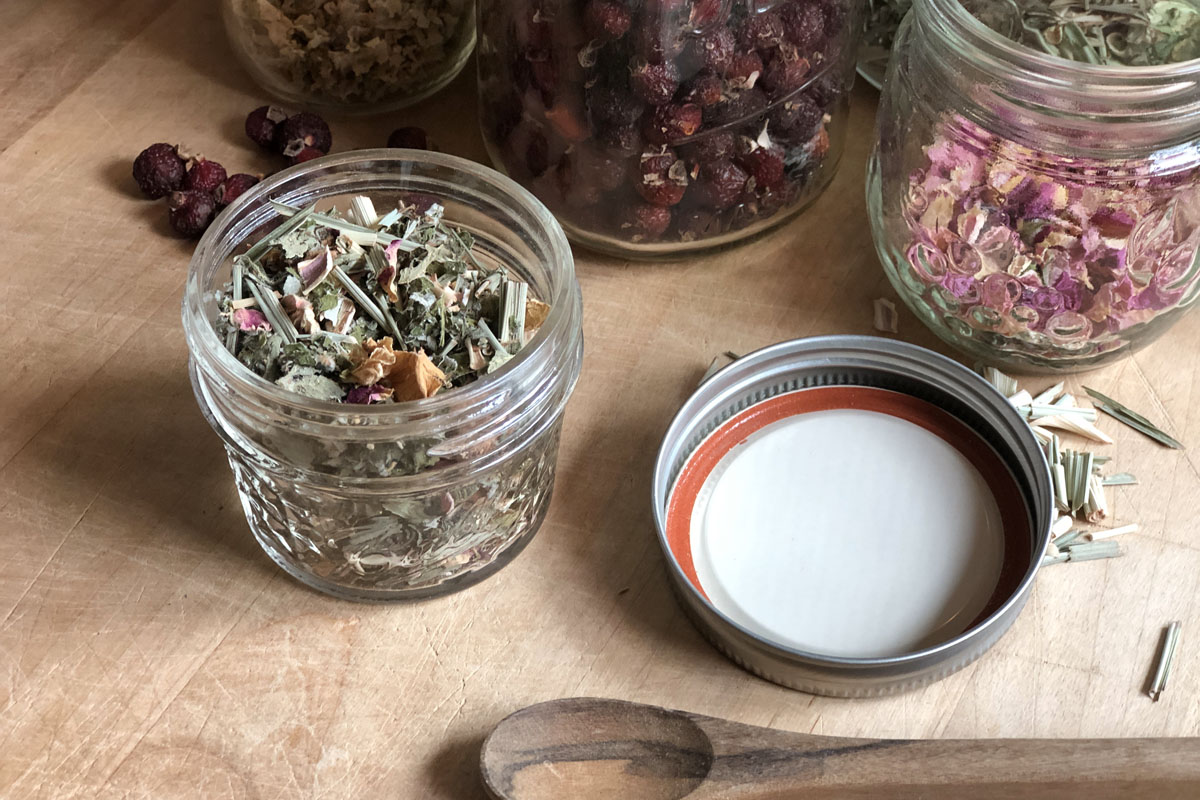
Here are just a few of my favorite tea blends. The summer tea makes a light and delicious sun tea over ice!
Red Cocoa Rose: Rooibos with dried rose petals and cocoa nibs
Early Summer Tea: Tulsi, Raspberry Leaf, Cornflower Petals, Calendula Petals
Winter Blend: Mint, Raspberry Leaf, Hawthorn Leaves & Berries
While many ingredients can only be found during a specific season - violets only bloom in winter and early spring - others are simply at their peak during a certain time of year. Mint, lemon balm, and raspberry leaf are best harvested in the spring, tulsi and cornflower are summer annuals, harvest hawthorn in the fall, and rosehips improve in flavor after the first frost. Seasons will range a bit based on your climate and geography, but you will soon know the best month to harvest your mint, or when the wild roses are blooming. Some plants like lemongrass can be harvested year round.
While there are dozens of flowers that may be used in loose leaf tea (and 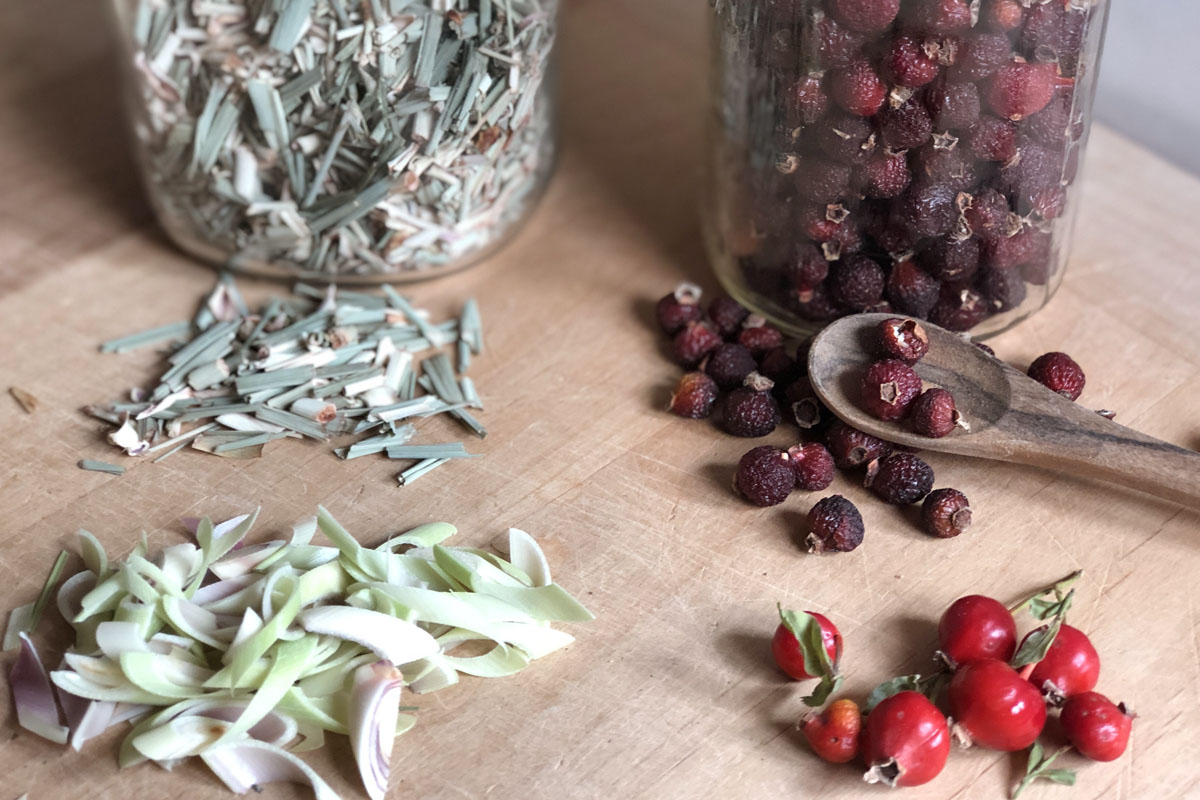 certainly hundreds of different herbs) here is a list of ten common flowers for tea to get you started.
certainly hundreds of different herbs) here is a list of ten common flowers for tea to get you started.
• Rose Petals (all roses are edible)
• Calendula
• Bachelor Buttons/Cornflower
• Violets
• Chamomile
• Lavender
• Jasmine
• Hibiscus
• Passionflower
• Echinacea
*Please Note: any time you are harvesting wild plants, it is important to properly identify the species.
Once your herbs are ready to harvest, you must dry them out properly. Herbs can be bundled and hung to dry in warm weather (or by the wood stove), or pop them in the food dehydrator around 110 degrees F until they are completely dry. Store in canning jars for up to a year.
While black tea is usually done brewing within three minutes, let your herbal teas brew longer to extract the subtle flavors. Add boiling water and steep for at least ten minutes. Brew sun tea all day in a sunny spot (these half-gallon jars are perfect), bring it inside at dusk or the following morning, and refrigerate. Enjoy!
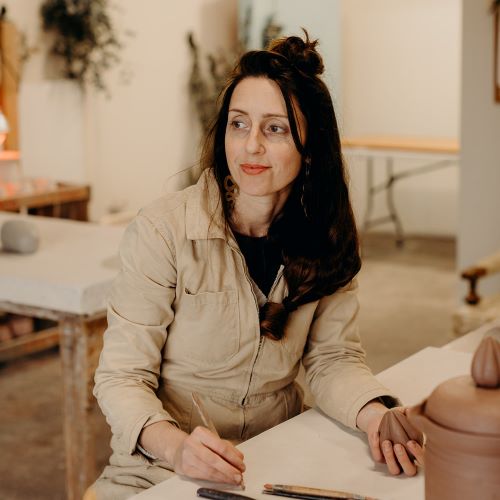 Sienna Orlando-Lalaguna is the owner and maker behind Sienna Ceramics. She is a foodie, urban gardener, and plant-lover with a background in professional cooking. Her interest in food preservation stems from a love of local, organic produce, and a desire to extend the harvest from season-to-season. Sienna is interested in reviving the knowledge of fermentation, and bringing this ancient process back into modern communities like yours!
Sienna Orlando-Lalaguna is the owner and maker behind Sienna Ceramics. She is a foodie, urban gardener, and plant-lover with a background in professional cooking. Her interest in food preservation stems from a love of local, organic produce, and a desire to extend the harvest from season-to-season. Sienna is interested in reviving the knowledge of fermentation, and bringing this ancient process back into modern communities like yours!